By Laurel Aiello
May is the perfect time to plan your veggie garden in Northern Colorado. Whether you’ve already started vegetable seeds indoors or you’re waiting until the last frost to direct sow seeds or plant veggie starts, the first step is determining which plants will give you the highest crop yield and the least amount of trouble. Here are some easy vegetables to start with.
Cherry Tomatoes
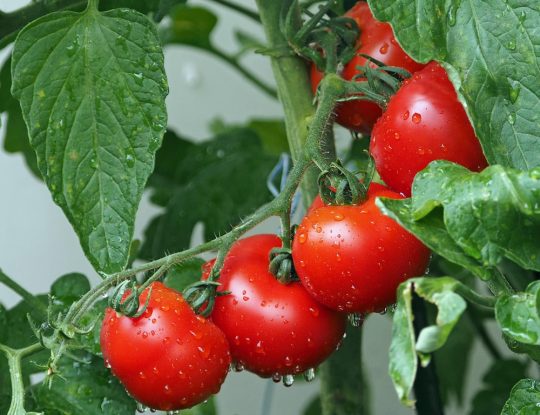
Slicing tomatoes can be finicky in Colorado’s climate—especially when temperatures exceed 85º F—but many cherry tomato varieties produce high yields of fruit with minimal effort. In fact, most cherry tomato plants are indeterminate, meaning they will continue producing fruit throughout the season as long as the growing conditions are right.
Plant cherry tomatoes in full sun (six-plus hours of direct sunlight), either in your garden bed or in a large pot with a tomato cage for support. Water them thoroughly when the soil feels semi-dry, usually every other day in the cooler months and up to twice per day in July and August. Fertilize them regularly with a vegetable fertilizer from your local garden center.
Several fast-growing, easy cherry tomatoes are Super Sweet 100, a sweet red cherry tomato with a maturity of 60 days; Sungold, a sweet orange cherry tomato with a 57-day maturity; and Black Cherry, a sweet and savory purple cherry tomato with a 64-day maturity.
Cucumbers
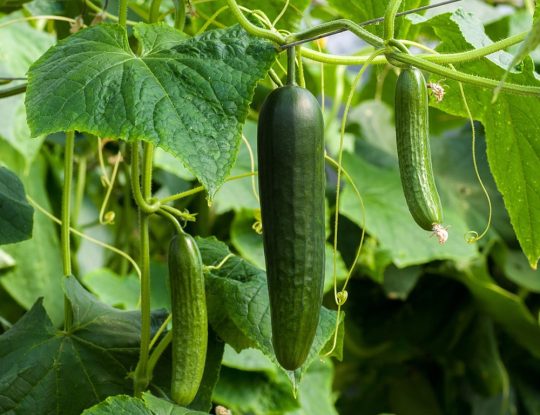
Cucumbers are another easy vegetable to grow—if you have enough space. These vining vegetables need a trellis for support and to ensure they get enough sunlight, otherwise they’ll weave throughout your garden and grab onto other plants with their tendrils. If space is a concern, try a bush cucumber variety (approx. 50-57 day maturity).
Plant cucumbers in full sun and water them thoroughly when the soil feels semi-dry, typically every day in the summer. Like tomatoes, they will produce more fruit when fertilized regularly with a vegetable-specific fertilizer.
There are many easy cucumbers to grow, including slicing cucumbers (Marketmore variety: 58-day maturity), pickling cucumbers (Hokus variety: 60-day maturity) and English cucumbers (approx. 50-58 day maturity). A fan favorite is the lemon cucumber (65-day maturity), a tennis ball-shaped cucumber that turns yellow when ripe and is crisp, refreshing and delicious on summer salads.
Squash
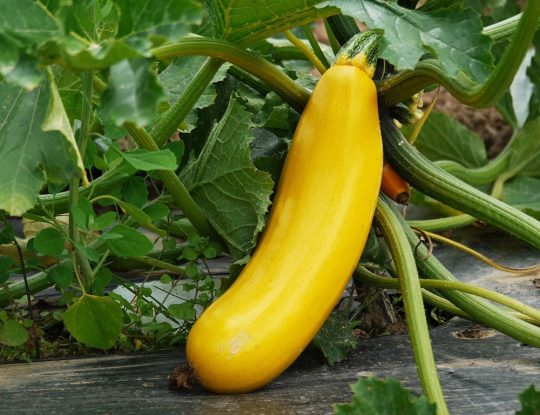
Like cucumbers, squash take up space, with some varieties’ leaves measuring a foot in diameter and stretching a foot or two off the ground. Squash need ample room, full sun, occasional fertilizing and thorough watering to thrive.
Zucchini plants are particularly vigorous, producing high yields of fruit early in the growing season (Dunja variety: 47-day maturity), and yellow squash also produce high yields of fruit throughout the summer (approx. 50-day maturity). Be sure to harvest zucchinis before they get too big—the fruit can exceed two feet in length and six inches in width—as the skin will harden and the insides will become mealy.
Other squash types take longer to mature. These include acorn squash (Table King variety: 80-day maturity), butternut squash (Honeynut variety: 110-day maturity), spaghetti squash (approx. 88-day maturity), kabocha squash (Kurinishiki variety: 95-day maturity), carving pumpkins (Howden variety: 115-day maturity), miniature pumpkins (Wee-B-Little variety: 95-day maturity) and pie pumpkins (New England Pie variety: 105-day maturity). Don’t let this deter you, as these varieties are still easy to grow but require some patience.
Small peppers
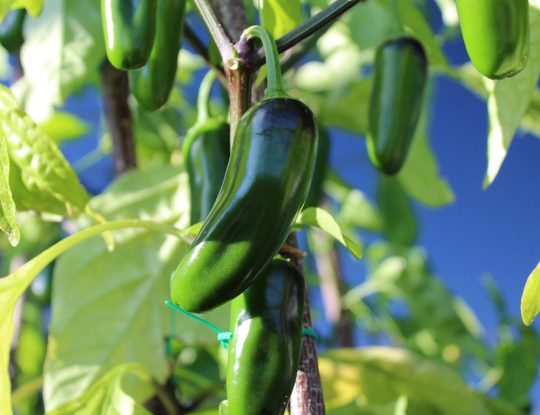
Large peppers can be challenging to grow in Northern Colorado, but nearly all small pepper varieties produce hefty yields of fruit in late July through early September. Peppers require full sun and can go semi-dry in between waterings. Fertilize them with a vegetable fertilizer to increase crop yields.
If you like flavorful peppers with little-to-no spice, try growing shishito peppers (60-day maturity), which are delicious when roasted or pan-fried with salt. For a small, mildly spicy pepper, try Mariachi peppers (60-80 day maturity), and for small, sweet peppers, try Baby Belle peppers (80 day maturity for color). If you like spicy peppers, try jalapeños (El Jefe variety: 67-day maturity; Jalafuego variety: 70-day maturity) or cayenne peppers (75-90 day maturity).
Beans
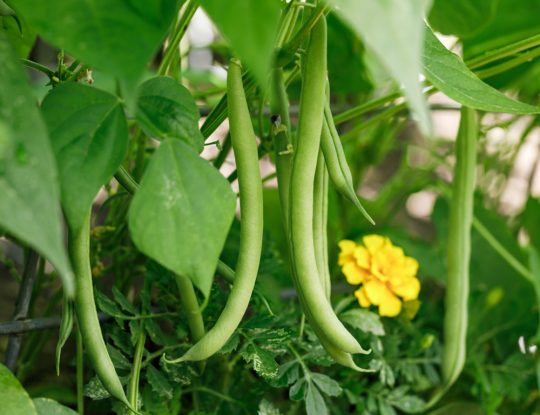
Pole beans are easy to grow if you have a trellis or garden arbor for them to climb on. If you don’t have space for these vining plants, plant bush beans, a compact version that is just as tender and tasty. All beans need full sun and regular watering to thrive.
Beans come in many colors, including green snap beans (Contender Bush variety: 50-day maturity), yellow beans (Gold Rush variety: 54-day maturity) and purple beans (Royal Burgundy variety: 55-day maturity). After harvesting off the vine, bake them in a casserole, or blanch or sauté them and serve them with bacon and other toppings.
Broccoli and Brussels Sprouts
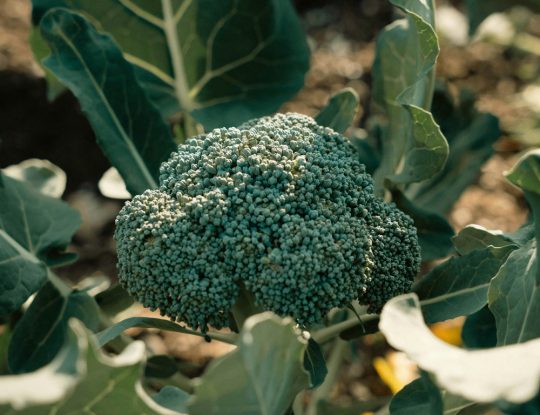
Though they look and taste different, broccoli and Brussels sprouts are two varieties of Brassica oleracea—along with kale, cauliflower and cabbage. Both are easy vegetables to grow in full sun during the cooler months, so you can grow two separate crops in the spring and fall. They prefer temperatures between 60-70°F, but they can tolerate temperatures near freezing. Some even argue that a light freeze enhances their flavor.
Try the Gypsy broccoli variety (60-day maturity), which does well in poorer soil and produces a single, large crown, or plant a smaller and tenderer variety, like Rapini (45-day maturity), an Italian raab-type heirloom broccoli that produces main heads and side shoots for a longer harvest period. For Brussels sprouts, try the Jade Cross variety (85-95 day maturity), which produces 30-inch-tall stalks with crisp sprouts.
Root Vegetables
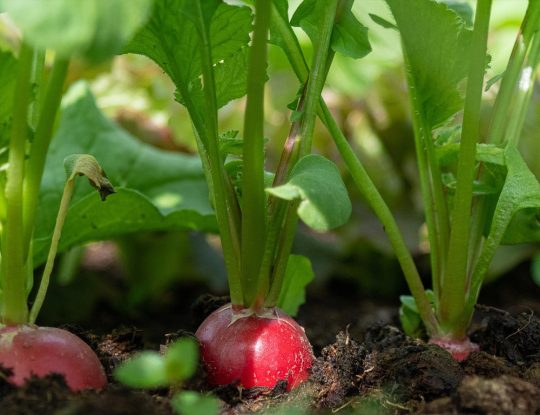
Carrots, radishes, beets, turnips and other root vegetables thrive in cool climates, with shorter harvest periods making many varieties ideal for easy early- and late-season planting. Plant their seeds in fertile soil a few weeks before the last frost, ensuring they get plenty of direct sun and the soil is kept damp. If they can tolerate higher temperatures (many carrots can, for example), plant additional seeds throughout the growing season.
Try Danvers carrots (65-day maturity) for crack-resistant carrots that grow up to seven inches long, or try a Carnival Blend (65-75 day maturity) for colorful carrots in purple, orange and yellow. For beets, plant Early Wonder (48-day maturity) to get rich, flavorful red roots, or try Golden Boy (65-70 day maturity) for sweet, tender, golden-orange roots. Crimson Giant radishes (28-day maturity) are crisp and refreshing, whereas Purple Top White Globe turnips (50-day maturity) are mildly sweet.
Leafy Greens
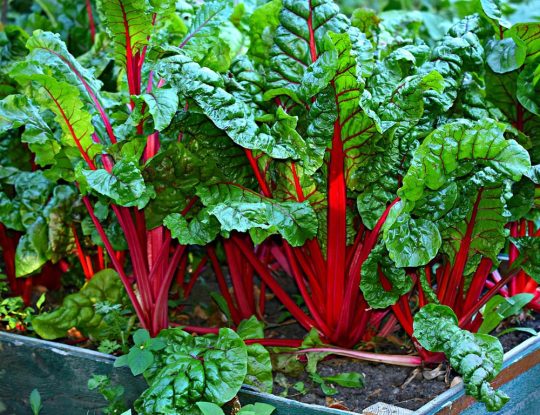
Anyone can grow leafy greens in part shade with temperatures at or below 70ºF. These cool-season crops have fast maturity dates; even large lettuce heads can mature in 28-50 days. Plant their seeds in rows, then thin out the weaker seedlings to give the stronger ones more room and energy to grow.
Beginner gardeners should start with a Gourmet Baby Greens Mesclun Lettuce mix (21-58 day maturity), with tender salad greens that can be harvested continuously. If you’re looking for more nutrients, try kale (Lacinato Dinosaur variety: 21-62 day maturity), spinach (Matador variety: 28-48 day maturity) or Swiss chard (Five Color Silverbeet variety: 20-60 day maturity) for yummy superfoods that can be enjoyed raw or sautéed.
Originally published on April 25th, 2025.
